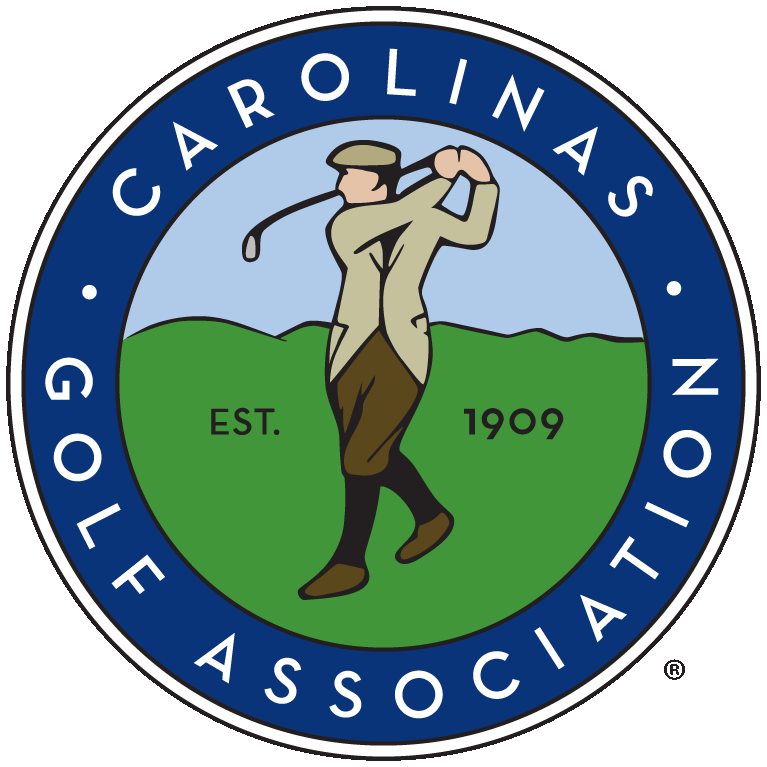

Gene Hamm
1999
Golf Course Architect
Twice in the mid-1950s, a young golf professional from Raleigh was promised head pro jobs, first in Jacksonville, N.C., and later in Durham . But neither situation developed as planned. So it was in 1957 that Gene Hamm placed that fateful phone call to Robert Trent Jones.
"He told me if I needed work, to come on up to Wilmington, Delaware, where he was designing a golf course," Hamm says. "I went up and built it for him, then built another one. By 1959, I was ready to come back to North Carolina and try to design a golf course on my own."
That was the first domino to fall in the prolific and probably underrated design career of Hamm. Today 72 and retired in Raleigh, Hamm designed more than 60 courses in southern Virginia, Piedmont and eastern North Carolina and the Myrtle Beach area.
"I've been very happy with what I've done," Hamm says. "I came along in an era where things were a lot different. We didn't have the equipment they have today; we didn't have the budgets they have today. But the work we did was considered very good."
Hamm has designed four courses in the Pinehurst area, 12 in Myrtle Beach, a dozen or so along the Virginia-North Carolina border in towns such as Martinsville and Danville. He's done work in many eastern North Carolina towns such as New Bern, Kinston and Clinton, and lists Cheviot Hills, the second 18 at North Ridge Country Club, Wake Forest C.C., Lochmere C.C. and Chapel Hill C.C. among his designs in the Triangle area.
"As soon as a developer starts thinking of an architect, he's immediately going to think of all the great ones who get all the press or the tour players who he wants associated with his development," says Tommy Albin of Whispering Pines, who hired Hamm in the mid-1980s to design the Holly Course at Pinewild C.C. in Pinehurst.
"Gene is in neither of those categories. But I think he's the most underrated architect there is. He's not won the U.S. Open or the Masters. But his knowledge of routing a golf course and of getting the most for your dollar puts him right up there with the best, in my opinion."
Albin remembers officials from Club Corporation of America, his eventual partner in Pinewild, suggesting some features to add "sex appeal."
"Gene said to me, 'Tommy, that's fine, but it's going to cost a lot of money,'" Albin says. "He was always looking out for the bottom line of his clients."
Hamm grew up in Raleigh and first learned golf by caddying at the Raleigh Golf Association course. His first job was with Ellis Maples at New Bern Country Club in 1946. After one year, he moved to Pinehurst to work under green superintendent Frank Maples, and later was head pro in Mt. Airy.
"Back then you had to be golf pro and supervisor of the golf course at the same time," he says.
In 1955, architect George Cobb hired him to build a course in Jacksonville, and Hamm was to get the head pro job after the course opened. But the course owner reneged on the arrangement, and Hamm found work building the Duke University Golf Course for Robert Trent Jones. Again, Hamm was to get the head pro job when the course opened, but the job went to Duke golf coach Ellis "Dumpy" Hagler. That's when Hamm took more work from Jones in Delaware and started on his own in design, helping pro Al Smith at Danville C.C. redesign the course there.
"Trent Jones wanted me to go to Venezuela to build a golf course, but LaRue, my wife, and I had two children, and I couldn't go running off to Venezuela," Hamm says. "So I took off on my own."
As a PGA member, a course construction expert and a member of the national greens superintendents' association, Hamm has brought a well-rounded background to his design projects. He's maintained a low profile throughout his career and built courses that remain today playable and interesting despite being built in the 1960s and early 1970s for less than half a million dollars. His favorite design, Pinewild, was built for about $2.5 million a decade ago.
"That was very little money," Albin says. "But it's still a tremendous golf course."
"There are some things you can't leave out, but you can control the cost with the routing plan and the clearing of the golf course," Hamm says. "You can keep the course pretty tight and not take out so many trees. You don't move as much dirt. You don't elevate the greens as much. You keep the greens smaller.
"It's not hard to keep a golf course challenging when the hole's only four and a quarter inches wide."
Hamm’s last design job was Caswell Pines in Yanceyville. He says if someone came to him today with some work, he'd consider taking it.
"Otherwise, I'm finally getting to play some golf," he said.
